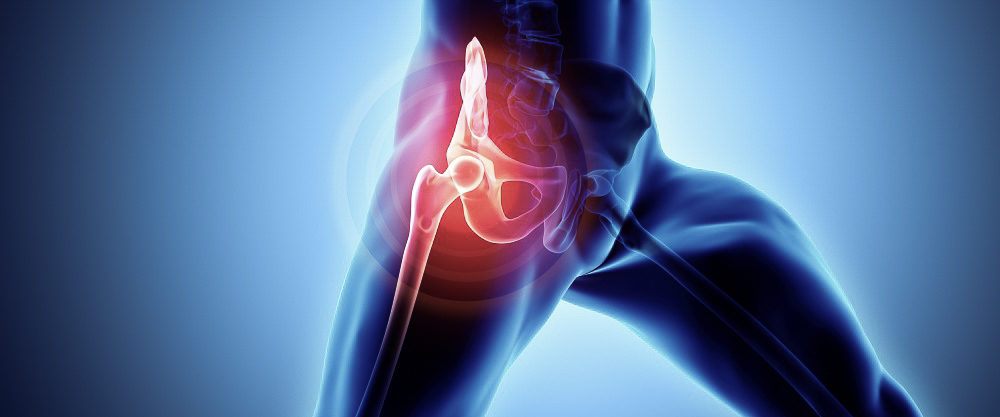Selection Injuries: The Good, Bad And Ugly, Part 2
I was screening a group of candidates after several weeks of running-intensive training. One candidate, a highly proficient collegiate runner who would routinely finish runs well ahead of his peers, mentioned a worsening ache in his right thigh and knee. For a skilled runner who knows what muscle soreness feels like, it struck me as unusual that he would volunteer a seemingly insignificant complaint to me in this public setting.
After further interview and orthopedic testing, it was clear that this was not a muscle or a knee problem. The candidate had developed a femoral neck stress fracture, a high-risk hip injury that took him out of training. I understood the gamble he faced in divulging his symptoms; he’d rolled the dice in speaking up and lost. However, as the injury was caught early, he didn’t require surgery, and along with it a high likelihood of military discharge. While he healed, we identified some faulty movement and training program issues, and he was able to recycle to a later class successfully.
Our candidate’s situation is an example of how pain at one site can mask an injury hiding somewhere else. Thigh and knee pain are common problems experienced by sport and tactical athletes, while femoral neck stress fractures rarely occur. However, just because the numbers are on our side doesn’t mean we can overlook insidious injuries that may cause significant problems down the road.
In Part 1 of this article series, we looked at common injuries that affect the shoulder area. In Part 2, we will take a look at common injuries that affect the hip and knee. Because these two areas are intimately connected, stress at one end can cause problems at the other.
As in Part 1 of this article series, Part 2 will highlight a few common injuries that, in rare cases, are actually something else. If you experience any of these warning signs, you should seek the consultation of a qualified healthcare professional who regularly treats injuries in sport and tactical athletes. The information that follows is for your education and should not take the place of an appropriate evaluation by a licensed healthcare provider.
Hip
Hip Flexor Strain
Muscle strains around the hip joint are common for people engaged in high volumes of running, rucking, swimming, or climbing elevation. Several muscles work to bend your hip, but the most commonly injured during selection include the primary hip flexor muscle (iliopsoas) and the secondary rectus femoris (which is actually a thigh muscle). A hip flexor strain usually feels like a sharp pulling sensation at the front of the hip below the belt line whenever you lift your leg.

Strains can heal on their own within two to three weeks, but continued activity is a common cause of lingering issues because the tissue may never fully heal. Similar to strains in the shoulder, self-treatment for the hip flexors includes ice for pain, heat for stiffness, trigger point massage, and gradual muscle stretching. An additional option for the hip includes a wrapping technique called a “hip flexor hip spica”. This technique uses an elastic compression wrap applied to the hip and pelvis in order to support the muscles and reduce pain while you remain active.
Pinched Nerve
A pinched nerve can mimic a muscle problem in the thigh or leg because the nerves control those same muscles. A nerve can be irritated or pinched anywhere along its pathway, but is usually compressed by a spinal disc in the lower back. An irritated nerve here (called a lumbar nerve) may cause radiating pain that travels downward from your thigh to your foot.
Sometimes, a set of specific exercises is all that is necessary to alleviate the pressure causing a pinched nerve. A physical therapist can help determine which exercises are best for you, depending on where the nerve is irritated. Manual therapy that works to realign the muscles and joints around the nerve can also be helpful.
Stress Fracture
A stress fracture in a bone is caused by repeated (rather than sudden) mechanical stress. Runners are at a higher risk of this injury, especially if there is a sudden increase in training (mileage, intensity, or frequency). Not all stress fractures are created equal, as some are more serious than others. One that is particularly important to watch out for is a stress fracture in the femur bone, the long bone of the thigh that bears the weight of the body with each step. Deep thigh or groin pain that is difficult to pinpoint and gets worse with activity are the most noticeable symptoms of a potential fracture. However, as mentioned earlier, pain that radiates down to the knee may also indicate an underlying femur injury.
If you are having persistent hip or thigh pain that is not resolving with rest after a selection event, stop running. See a healthcare professional with experience in sports medicine as soon as possible to receive the appropriate tests and imaging. This injury may be misdiagnosed as a muscle strain, particularly when the surrounding muscles are already sore from selection events. While some stress fractures are low risk, femoral stress fractures are serious. A worsening injury that progresses to a full break can have long term consequences.
Knee
IT Band Friction Syndrome
The iliotibial band is a thick band of connective tissue (fascia) that travels from the outer hip to the outer knee. Overuse during running and rucking create a friction injury at the knee where the band rubs across a prominent ridge of bone. Sharp pain occurs along the outer knee when the stress of repeatedly bending and straightening your knee exceeds the tissue’s tolerance.
The primary problem is almost always overuse, and the tissue will heal with two to three weeks of rest and low impact activities. However, if the pain returns when you increase your activity level, scar tissue, muscle imbalance or improper mechanics may be the cause. FYI: you can’t stretch the IT band more than one to two millimeters. So, any stretching exercises directed at the IT band are actually stretching something connected to it.

Patellar Tendinitis
The tendon connecting the kneecap (patella) to the shin bone undergoes thousands of stretch cycles on every run or ruck. Over time or with sudden increases in training, the tendon can become overloaded, resulting in inflammation, small tears, and pain. Patellar tendinitis is characterized by localized pain at the lower tip of the kneecap that increases with squats and going down stairs. Self-treatment includes ice for pain, heat for stiffness, stretching any tight leg muscles, and a gradual return to activity.
After the initial inflammatory stage, pain sometimes persists for more than a few weeks. This could mean that the tendon has developed some degree of degeneration and is now weakened. Do not assume that strengthening weak thigh muscles will fix the problem, however. A weakened tendon is easily overloaded with exercises designed to strengthen muscles. A physical therapist can determine if you have a tendon injury, and can provide treatments and exercise program recommendations to restore the tendon’s strength.
Patellofemoral Pain Syndrome
Patellofemoral Pain Syndrome, also known as Runner’s Knee, describes cartilage irritation on the underside of the patella due to repetitive activities such as running. Pain is also commonly felt when the knee remains bent, such as with sitting for long periods of time. With repetitive activities, rough spots may develop in the cartilage. These ridges can naturally produce a crunching or grinding sound without producing pain. However, if that cartilage is also weakened (or there is an alignment problem), the rough spots can swell with overuse, causing grinding sensations that are also painful.
Although this injury may not be serious, it has a high risk of causing long term disability. When the patellar cartilage is weakened, swollen, and painful, most people avoid activity or work around the pain. If you keep this up for months - or even years - you’ll cause further cartilage weakening and degeneration. At that point, many strengthening exercises are useless, because they overload the cartilage instead of helping it. A physical therapist who specializes in sports medicine can determine if your knee pain is due to a cartilage injury and can design a treatment plan to regain cartilage strength for the level of activity you need to achieve.
The strenuous nature of selection can create many injuries that will heal on their own with proper rest and recovery. But some injuries won’t simply go away with time. Our objective for this article is not to cause alarm, but to inform. Many of our clients have an incredible ability to push through pain. As a result, more severe problems may not be apparent until they cause serious injury.
Stay tuned for Part 3, in which we’ll continue down the leg to highlight shin and ankle injuries commonly sustained during selection courses (and outline what you can do to care for them).
Dr. Rita Chorba is a physical therapist who specializes in helping tactical athletes maintain career (and life) longevity. She transitioned from a career working with athletes at the University of Arizona to the Marine Special Operations community aboard Camp Lejeune. She is currently in private practice in Jacksonville, NC and writes for the Marine Raider Patch magazine and her blog at www.alphapnr.com.





